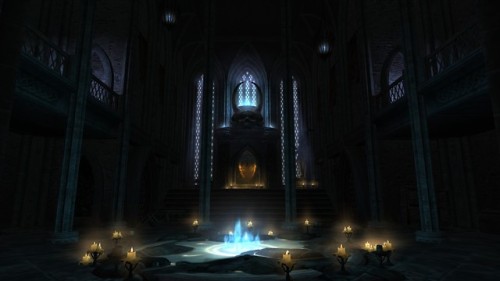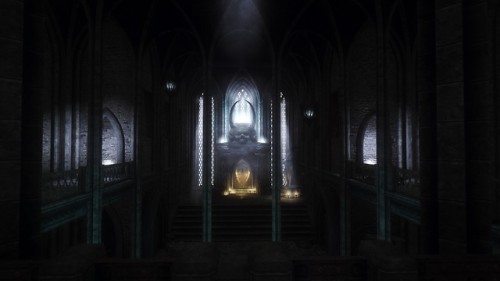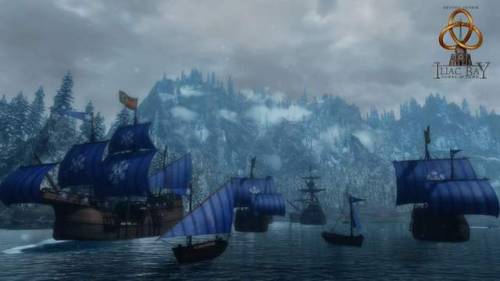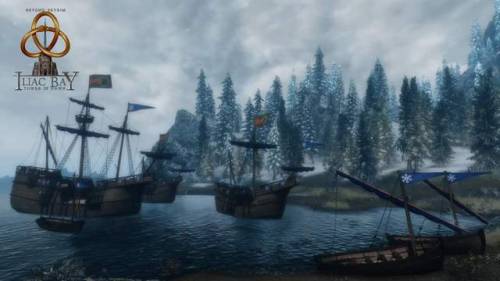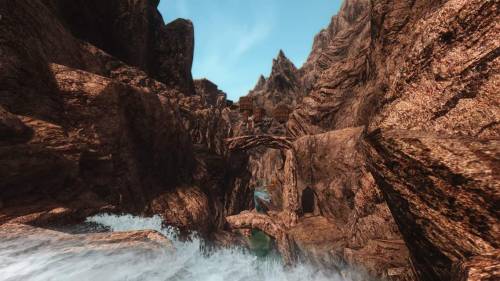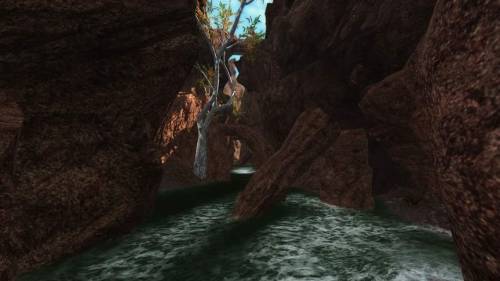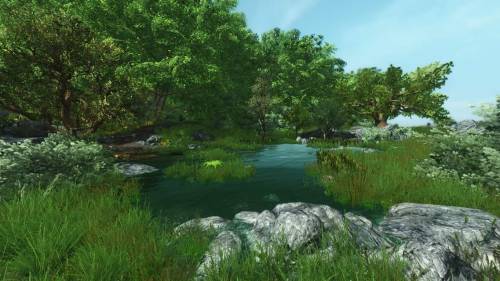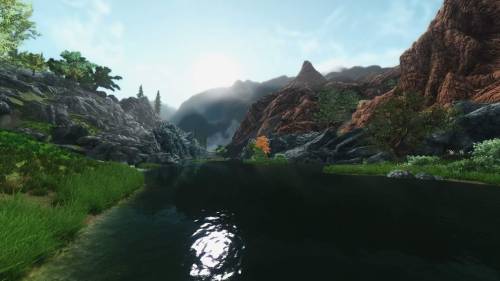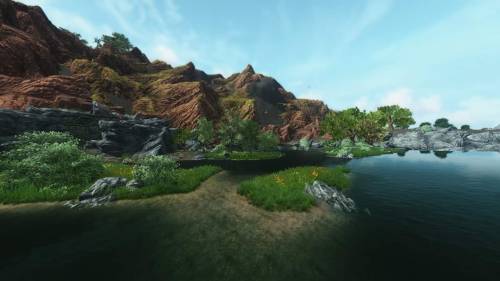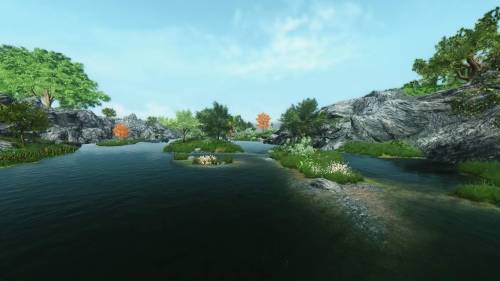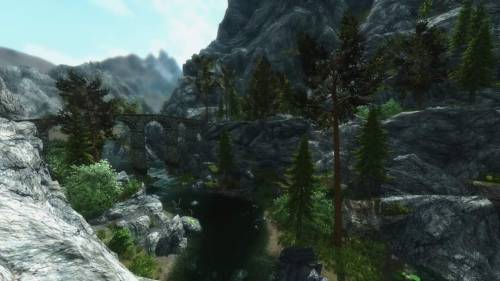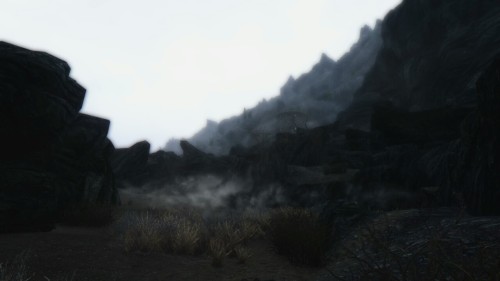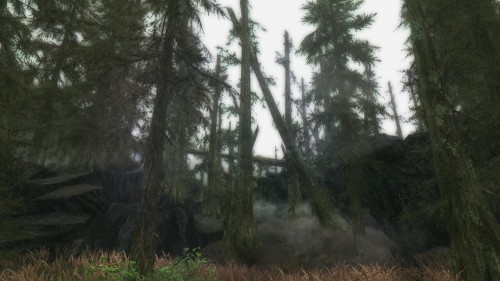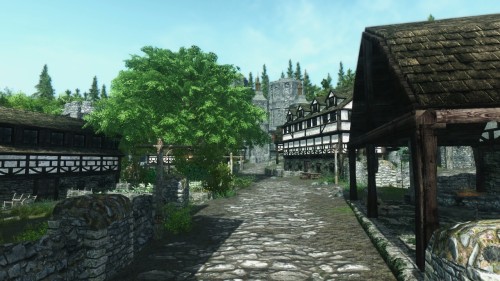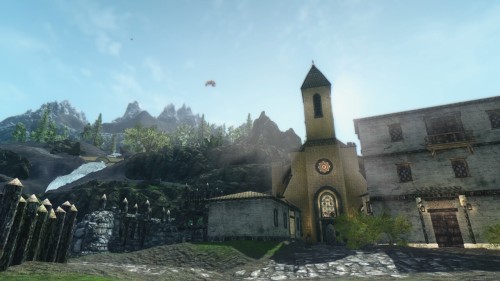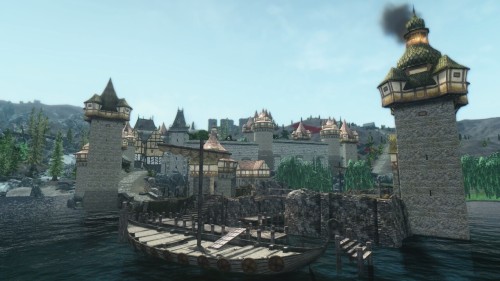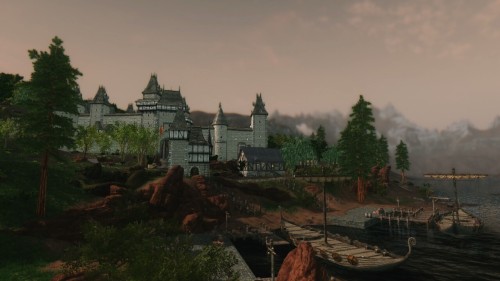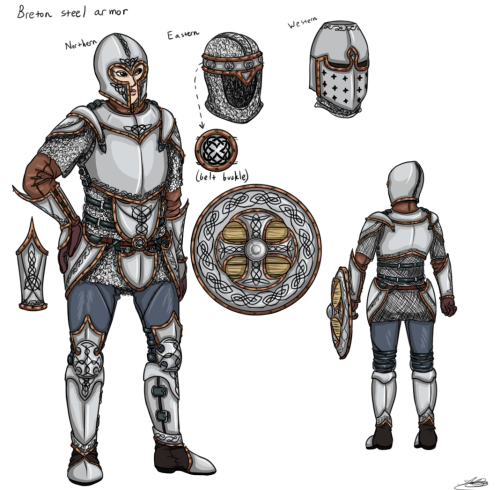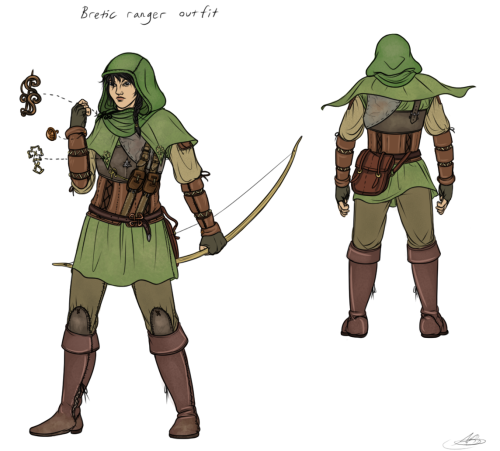#beyondskyrim
The Beyond Skyrim: Elsweyr 3D team is hard at work on the city state of Rimmen. GenoWerter has created a beautiful 3D render of Rimmen’s main gatehouse.
Post link
The northern Breton port city of Farrun has a melancholy and sinister reputation, stemming from a long and bloody history that stretches all the way back to its infamous foundation as the foremost centre of the slave trade in northeastern Tamriel.
Originally named Fal’Ruhn (or “Snow Run” in the Altmeris), the city’s vast dockyards and processing halls were built to enable first the local ruling Altmer clans, then the Direnni Hegemony to monopolise the lucrative westbound trade in human captives from the wars of the Falmer and Chimer to the East.
The city’s name quickly became a byword for dread and desperation across the continent for Nord and Nede alike, and even today, millennia after the original city was destroyed in a slave uprising that helped usher in the end of Direnni rule in High Rock, the modern city of Farrun has never been able to escape its sordid past.
The more recent history of the Kingdom of Farrun has been blighted by invasions of Orcish hordes, civil war, betrayal of sacred oaths and economic ruin. Some even whisper that the very land the city is built on is forever cursed by the evils committed here so long ago, though the rulers of the city are quick to punish such superstitious talk.
The Royal Navy of Farrun often send expeditions far from the borders of their kingdom to secure the sea lanes that are so vital to the port city’s continued prosperity. To this day, their sails still proudly display the blue-and-white Frost Sigil of Farrun’s royal house, who claim descent from the ancient warlords who drove the last Orcs out of their territory in the late Second Era and founded the modern Kingdom of Farrun. In recent years, however, they have begun to display another symbol on the flags atop their mainmasts - the red-and-black Fist and Crown-of-Thorns that is the symbol of the Eltheric League. A potent symbol to all who look upon Farrun’s Navy that an attack on them is also an attack on their northern Breton allies in Northpoint and Jehanna.
Models by Iliac Bay’s 3d Artist, Deviant Kaled.
Post link
The city of Skaven is named after Majuprei-Sut do-Skavein, a First-Era Yokudan politician who was instrumental in persuading the scattered survivors of thirty-eight Totambu destroyed by the inundation of Yokuda to unite and found the confederation that would eventually become the modern Tomba do-Nudri.
The mighty River Bjoulsae divides the Kingdoms of eastern High Rock from the Republic of Hammerfell. For centuries it has been the main artery of trade and communications for the remote, mountainous lands on either side of its upper reaches.
The opening of Hammerfell’s borders with Cyrodiil was one of the most divisive moments in the nation’s history. Some regions, such as Rihad and Elinhir, profited greatly from openness to Imperial trade, but others like the Totambu of Hegathe and Gilane believed that the foreign influx would undermine Yoku traditions. This split would lead to the formation of the political parties that still divide Hammerfell to this day: the Crowns and the Forebears.
The Black Wastes are an insidious magical contamination that has gradually spread outwards from the subterranean complex of the Crypt of Hearts over the past three centuries, causing crop failures, deformed and stillborn livestock, and nightmarish hallucinations for the magically gifted wherever its taint has extended. The best efforts of mages and natural philosphers from all over the Eight Kingdoms have thus far failed to uncover the contamination’s cause or stem its spread, and the Black Wastes now occupy much of the borderlands between the Kingdoms of Farrun and Shornhelm.
The sharp divide between nobility and peasantry is one of the features of High Rock which visitors from the more egalitarian lands of Cyrodiil, Hammerfell and Skyrim find difficult to understand. The notion of a social rank defined solely by birth, with no account given to competence or vocation, is the exception in these societies, not the rule. In order to understand why High Rock is so different, it is necessary to understand its history, and how the ancient Direnni social order of slavery gradually gave way to serfdom.
In essence, serfdom is a bilateral contract between commoner and noble, usually but not always enforced by magically binding oaths administered by the noble’s wizards (or by the noble himself if he is a witch-lord). In return for offering obedience and a portion of all his income, the serf holds land from the lord, and is given the noble’s military protection from bandits and monsters. These oaths are binding not only on the individuals who swear, but on all of their descendants. A serf who defies his lord or leaves his land shall be stricken by curses or even die, and a noble who fails in his reciprocal duties may legally be replaced by his overlord. An oath of serfdom can only be annulled by the intercession of the gods, or in some cases a more powerful wizard.
Serfdom was invented as a partial replacement for slavery during the latter stages of the collapse of the Direnni Hegemony. Enterprising lords offered rewards of serfdom as a way of incentivising their own slaves to fight and work harder, whilst retaining their subservience. Whilst serfs remained under the near total control of their lords, they were no longer considered property, and could not be deprived or separated from their lands, as well as being able to own their own personal property, including slaves.
Following the annexation of Greater Betony in 1E 2710, Reman I formally issued a proclamation declaring slavery to be “abhorrent in the eyes of the Divines”, and to be prosecuted wherever it could be found. Although the Imperial proclamation recognized the distinction between slavery and serfdom, it nevertheless considered the latter to be close enough in spirit to slavery to demand a close degree of supervision. Certain types of magically binding oaths were forbidden, such as ones which would have prevented the serf from testifying against their lords in Royal or Imperial courts of law. In practice, this law was applied inconsistently, and many satirical bards pointed out that the extent of punishment for violations depended not on their severity but on the Lord in question’s loyalty to the Empire!
Nevertheless, the cumulative effect was for oaths to become less restrictive as the constant power struggles of High Rock wore on, with lords exploiting Imperial interventions to discredit their rivals and bribe their own vassals with promises of greater freedoms and privileges. In modern High Rock, this trend has continued to the point that serfs and freedmen can be considered to overlap to the extent that one can no longer make assumptions about an individual’s social status from their feudal rank.
Rather, their respective status has more to do with divides in values between town and country, and between the national ethos of rival kingdoms. In the conservative heartland of Daggerfall, serfdom is seen to embody tradition, loyalty, and binding mutual obligations between ruler and ruled, and widespread freed status is seen as a derogation of the nobility’s responsibility for their subjects’ welfare. In metropolitan Wayrest, where attitudes are diametrically opposed, liberty is prized above all else even if it results in poverty, and a family would rather starve than cease to rely on their own resources.
The United Kingdom of Daggerfall-Camlorn is a relatively new creation by Tamrielic standards, as it came into existence on on the 12th of Hearthfire, 4E 12. This was the day of the death of Senhyn II, the last independent ruler of Camlorn, whose possessions passed to King Camaron I of Daggerfall through his Queen Kelmena, Senhyn’s daughter. The two kingdoms were formally amalgamated mere hours later, becoming the largest and most powerful realm in all of High Rock.
Unfortunately for Camlorn, its importance and influence began to slowly and steadily decrease as Daggerfall assumed the superior position in this new relationship. It was never a marriage of equals, Daggerfall having greatly outweighed its neighbor in population and wealth prior to their Union, and with a slow inevitability, the political authority and courts of the Kingdom began to steadily centralize in Daggerfall. While this was not done out of any malicious intent, some observant Camlornites nevertheless began to wonder if the new Union was just one more territorial acquisition for Daggerfall.
This resentment ultimately reached a breaking point in 4E 176, when, taking advantage of the chaos in the Kingdom following the disastrous Alik’r expedition and untimely death of King Eldred the Pious, a group of prominent Camlornites staged an uprising to once again secure Camlorn’s independence. But Eldred’s hastily-crowned son Otho was of sterner constitution than his soft-hearted father, and marched his remaining armies north, crushing rebellion and forging back together his father’s shattered Kingdom one castle at a time, in a bloody campaign that quickly earned him the epithet of Otho the Cruel.
Although for a few short weeks Camlorn enjoyed its “Summer of Flowers,” this was cut short when Otho’s forces arrived at its gates. Promising to address the concerns of his subjects, Otho and his army were admitted to the city to meet with the rebel ringleaders, whereupon his Knights of the Dragon charged the amassed citizenry in Camlorn’s central square and enacted the massacre that would be known ever after as “Bloody Tirdas.” In the aftermath, the Knights of the Dragon searched through the city, house by house, rounding up the conspirators and hanging them in the city’s bloodstained main square. Notably, Camlorn’s own Knights of the Lion refused to participate in the slaughter of their fellow citizens. Though the rebellion was crushed without mercy, the event left a bitter legacy that even the death of Otho and the accession of his more conciliatory son Gothryd IV has done little to erase. Since then, tensions between the two cities’ populations have settled back into a state of uneasy cordiality, although many in Camlorn still commemorate the massacre in mournful song, and it is no secret that Daggerfall continues to view both Camlorn’s populace and the Knights of the Lion in particular with suspicion.


